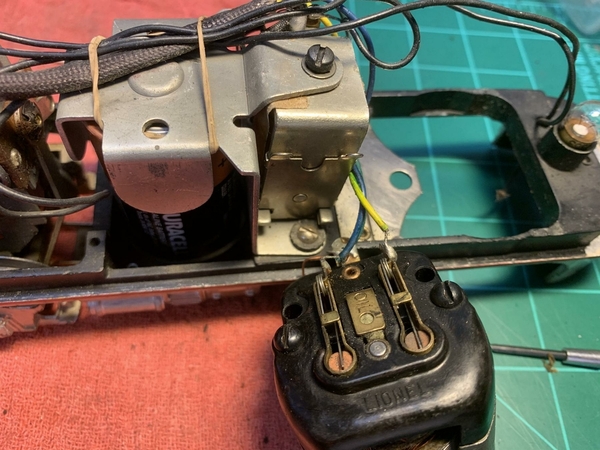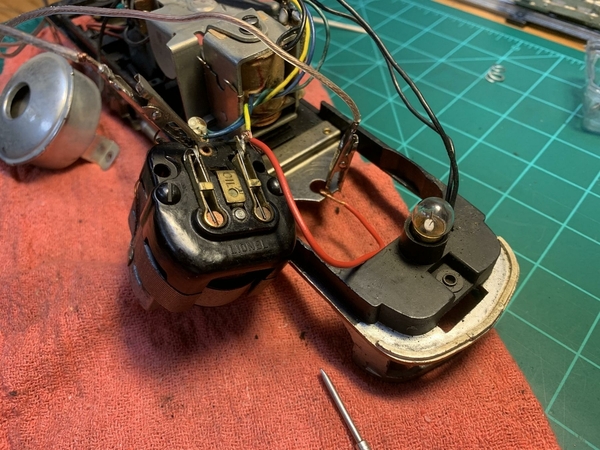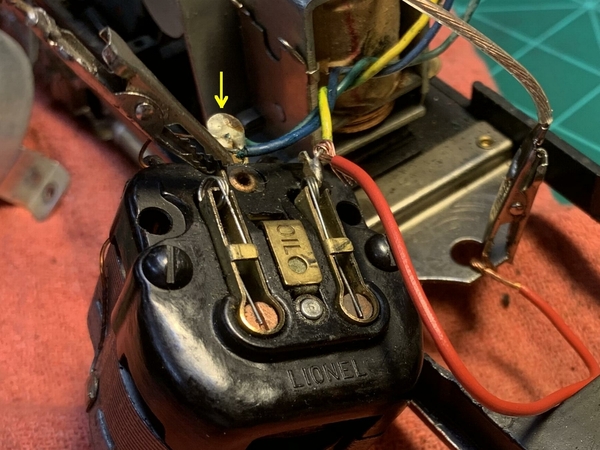Okay, now that I understand the jumper/etc, the motor powers freely either direction. It will even roll up a shop towel onto the pinion, wedging it to a stall. (Don't ask me how I know that.)
In the handling of the motor, tab wires started breaking off, one by one. (Fix one... then another breaks, fix it... then the last one breaks.) Anyway, I stripped and cleaned the wire ends, tinned 'em and re-soldered as needed. Testing indicates all wires made good solder connections.
I reassembled all of it and placed it on the track. Same deal: E-unit plunger works, engages the pawl and rotates the drum... but nothing gets to the motor.
Bypassing the E-unit with all components reassembled resulted in the motor and power truck running just fine, either direction.
SO... the current is not getting through the E-unit. Doesn't matter what drum position, no power ever gets to the motor, either direction.
I think it's time to dig out the multi-meter to see if the current is getting to where it should. Suspect the field coil isn't getting current. If it was one of the other circuits, wouldn't it run in one direction but not the other?
Done for tonight. Getting ready to shut down the layout building and call it good fer now.
Thanks for all the input. Progress was made, and for sure, I've begun the process of learning Lionel wiring circuits. Learned a lot tonight.
Andre












